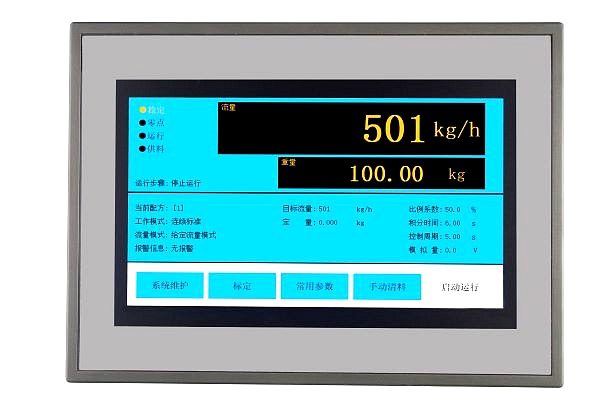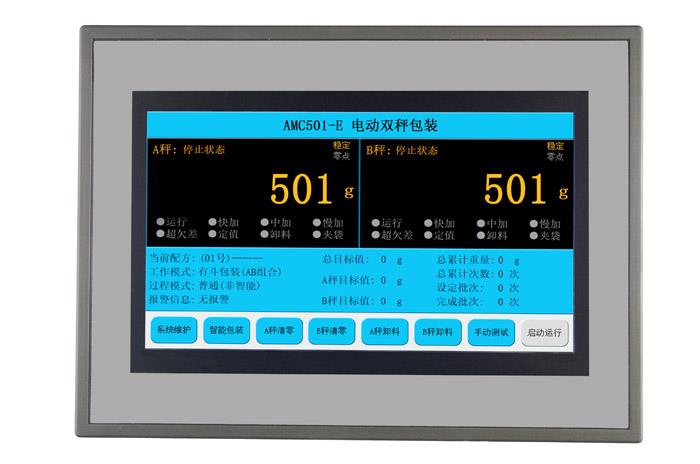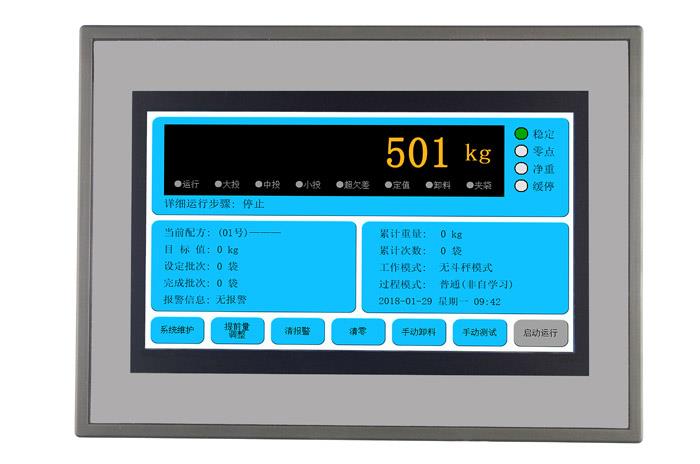
2019-12-01
The loss-in-weight scale instrument feeder is composed of a hopper, a dust-removing bag, an anti-arching stirring device, a batching screw, a frequency conversion or servo system, and an electronic control system. Weight. As the material is delivered, measure the true weight loss rate and compare it to the desired weight loss rate (setpoint). Loss-in-weight feeders automatically correct for deviations from the set point by adjusting the feeder rate. Partial value. It is a set of continuous feeding equipment used to feed pellets or powders into the extruder from the screw. The control system controls the continuous feeding amount according to the preset formula requirements to meet the extruder requirements. The need for continuous production. 100 recipes can be called in batching or operation. Each recipe can control 3 independent outputs such as: fast add, slow add and stop. Each recipe includes an independent automatic drop system correction system and The timer can be used to make the system more simple and convenient. Each formula (00-99) can be modified through the instrument panel, PLC or computer. The user can use the timer system and the upper and lower limit comparison functions to enhance the programming ability of the batching system.

It can be connected to 4 350 ohm resistance ground sensors, the nonlinearity is 0.01% of the full scale, the A\/D conversion rate is 1000 times\/second, the physical calibration or electronic calibration can be carried out, the range signal adjustment range is 0.3-2.0 mV\/V, Sensor excitation power supply: 10VDC\/5VDC, display refresh frequency optional, dimension, decimal point position, weighing division and display range optional, up to 100 recipes (each recipe includes fast add, slow add and stop signal control) , The operating temperature range is 0-40 degrees Celsius, each formula has 25 digital input\/16 digital output signals, all inputs\/outputs are optically isolated, with analog and digital filters, with a variety of analog and digital communication interfaces.
The working principle of the loss-in-weight scale instrument is based on the controlled weight loss. When the weight is less than the upper limit of the weight and greater than the lower limit of the weight, it is in the state of loss-in-weight batching. The weight loss per unit time is equal to the actual discharge flow, and the actual discharge flow and Set the flow rate to compare the difference value, and adjust the vibration discharge amplitude in time, so that the discharge volume is constant. When the material in the weighing hopper drops to the lower limit of the weight, the controller will discharge the material while keeping the discharge speed unchanged. The controller will switch to the volumetric discharge state, and the controller output signal is a constant value of the loss-in-weight feeding state.
The loss-in-weight scale instrument starts the feeding device, and the material of the feeding device enters the weighing hopper. When the material in the weighing hopper reaches a certain weight, the feeding is stopped. At this time, the weighing controller accurately weighs and starts the vibrating discharger to discharge according to the set flow. , enter the state of weightless batching again, and the weightless batching and volumetric batching work alternately.

1 10, 2025

1 10, 2025